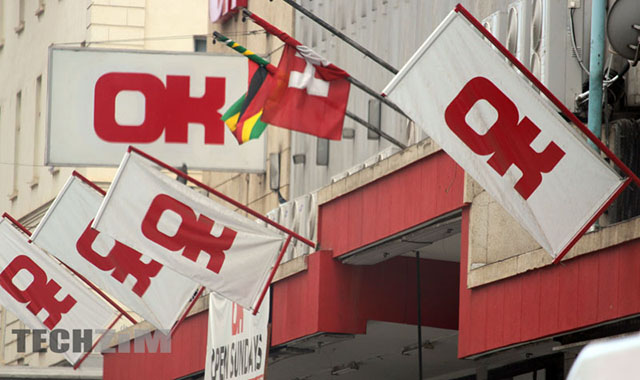
eBusiness Weekly

Kudzanai Sharara
Despite the prevailing inflationary pressures and growing market concerns, one of the country’s biggest retailers, OK Zimbabwe, says it is still recording real growth as evidenced by the difference between its revenue growth and its internal inflation.
Presenting OK Zimbabwe’s results for the half-year ended September 30, 2018, chief executive officer Alex Siyavora, said revenue for the period under review had grown by 23,2 percent to $330,1 million, a growth above official inflation rate of 5,39 percent as well as internal inflation of 12,1 percent.
The retailer also managed to grow its earnings with profit before tax amounting to $11,6 million, up 64,8 percent from $7,0 million, while profit after tax increased by 66,3 percent to $8,4 million from $5,1 million in the comparative period.
Attributable earnings per share for the period was 0,71 cents up 61,4 percent from 0,44 cents achieved in the comparable period.
In line with its dividend policy of paying at least 50 percent of earnings, the retail giant paid a dividend per share of 0,35 cents, up 75 percent from prior year.
The company closed the period with a cash pile of $33,7 million ($12,1 million prior year) which management said will be used to boost its stocks which were depleting at some point.
Still recording real growth
“While there was inflation, consumption levels increased, and some businesses experienced real growth, and I think we will show in our numbers an element of real growth,” said Siyavora.
“The growth rate is very real, our measure of inflation at the point of procurement, which goes through in sales is 12,1 average for the period, so it (inflation) could be say 23,2 percent (revenue growth) minus 12,1 percent (internal inflation) and that (the difference) amounts to real growth,” Siyavora said.
He said the retailer had “also seen physical movement of volumes in our shops,” more than what was moved for the comparative prior year.
Part of the revenue growth was also on the back of opening of new stores and space expansion at several outlets, said Siyavora.
Like for like revenue growth was 20,1 percent meaning the remaining balance from overall revenue growth of 23,2 percent, was a result of the net increase in trading space by 1,735.
Additional trading space came from OK Glen View (920 square metres), OK Marondera (665 square metres) and Bon Marche Chisipite (150 square metres).
The retailer spent $7,5 million in the opening of a new store in Glen View as well as the acquisition of properties, refurbishment of stores and replacement of equipment.
Limited product supply
In terms of product supply, Siyavora said imports were limited as Statutory Instrument (S1) 122 of 2017 was still in force for the six months to September. He, however, said products supply was relatively consistent.
“Local supply is still hamstrung by outdated technology, lack and cost of capital as well as state and cost of utilities, inter alia,” said Siyavora.
He added that the retailer’s own brands contribution remains low as the local industry capacity utilisation remains low.
He, however, said OK Zimbabwe’s stores were adequately stocked during the period to September, with the bulk of the products having been procured mostly from local suppliers, “although some imports remained necessary.”
Supplies, however, declined significantly during the first two weeks of October, but are slowly improving, the OK Zimbabwe boss said.
Imported products still expensive
Siyavora expects the relaxation of importation through S.I 237A will assist to further improve supplies and also bring stability to price movements.
He, however, said products availability and price stability is probably going to be slower than initially thought because while the ban was lifted, the duties were not removed.
“So that might slow the rate at which we restock and fill the pipeline,” he said.
He said one of the impediments to influx of imported products is that duty had remained in place making imported products expensive than local ones in US$ terms.
“What has tended to slow down the rate of imports is the fact that the duties are still in place, so the landing cost does not out compete the local suppliers.
“The structure for imports is you pay 40 percent duty, you pay surtax of 25 percent, then you pay VAT of 15 percent, so when you land that product its already very expensive.
“You take an example of cooking oil, when you bring a bottle of cooking oil, its costs will be higher than the selling price, which the processors are giving us at now,” said Siyavora.



